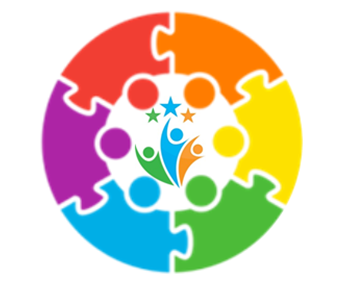Semi-Formal Curriculum
Intent
The aim of the Semi-Formal Curriculum is to provide a functional and effective learning experience to children and young people identified as meeting the “Bridging to Learn” criteria. Willow Class is a pupil led provision which operates within a burst/pause structure, designed to lower the children’s anxiety, meet their individual sensory and communication needs and encourage ownership of learning. The curriculum is a combination of formal learning in the core areas of English, Maths, PSHE and PE and the areas of the Semi-Formal Curriculum. The main aims of the Bridging to Learn provision are to:
- Develop functional literacy and numeracy skills, relevant to each individual’s level of understanding
- Provide context about the world around them
- Establish independence in all areas of the pupils’ lives
- Increase the children’s ability to focus on tasks individually, and as part of a group
- Increase attention and response
- Develop the children’s working memory, knowledge retention and recall
- Develop communication by providing a “Communication Toolbox” which focuses on imperative and declarative communication
- Encourage engagement and participation, either coactively or independently
- Provide the opportunity for supporting adults to model positive communication skills, such as listening, eye contact, responding, reciprocity and respecting others’ opinions
Implementation
Core Learning (please see subject areas for further information)
Subject specific learning for B2L pupils remains within the core areas of English, Maths, PSHE and PE. These are delivered using a topic approach which fits the horizontal learning style of the semi-formal cohort. Skills are developed through familiar tasks and structures which consolidate the children’s use and understanding of concepts without the activities becoming repetitious. Pupils are encouraged to develop symbol literacy through activities such as sorting, choice making and creating sentences using the Colourful Semantics approach. These activities further develop the children’s ability to communicate and express themselves. Functional maths learning is personalised to provide a useful and translatable skill set that create a foundation for independent learning and living. Shared play experiences offer the children regular opportunities for social thinking and communication, as well as creating safe experiences that further inform the children’s understanding of the world around them. Examples of this include exploring equipment that children may encounter at the doctor or dentist, or using kitchen toys to learn that a kettle will feel hot.
Semi-Formal Learning
Thea areas of the Semi-Formal curriculum are laid out below with a brief description of subject content.
Communication: Children are initially encouraged to make requests (imperative communication) by being offered choices of highly motivating activities. These choices can be made either during specific sessions or in a self-directed way by selecting symbols from the choosing board which is always available. Pupils are also encouraged to make comments or statements (declarative communication) which encompasses a huge variety of opportunities to communicate. Examples include commenting on the weather, who is in class today, expressing likes and dislikes, making “I see…” or “I hear…” statements and answering questions about stories or activities. Using communication for other reasons than to make requests is a vital social skill which Willow Class staff are always eager to assist the children to develop.
My Thinking and Problem Solving: A number of B2L pupils remain in the very early stages of problem solving, so supporting adults are constantly providing opportunities for them to identify problems as well as work towards possible solutions. Problem solving is more motivating for children when it provides access to a highly motivating activity so adults “sabotage” these for children and provide communication prompts to encourage them to seek a solution. As problem solving develops, pupils are encouraged to solve more complex problems which may include a number of concepts, for example, sharing resources with the group when there are not enough, putting together puzzles when parts are missing. Problem solving is part of every activity the children participate in during school time.
The World about Me: Activities in this area support the children’s understanding of the world around them and includes aspects of science, history, religious education, geography and modern foreign languages. There is particular focus on time – days, months, seasons, etc – as well changes in weather and the physical world around us. This encourages the children’s environmental literacy and expands their understanding and interest in their whole lived experience. Festivals from our own and others’ cultures are researched and celebrated, typically through food, music and art. Our focus is aimed at making both religious and traditional occasions meaningful to and for the children, as well as providing new experiences which enrich their enjoyment of learning.
My Independence: The independence curriculum is broken down in to three main areas, although B2L pupils are constantly provided with opportunities to complete tasks by and for themselves. Supporting adults try not to correct mistakes – such as putting on clothes inside out – unless there is a risk to the child’s safety if we do not. This fosters a sense of pride in the child’s own achievements, encouraging them to keep trying. The three main areas are:
My Cooking/Food Technology: While always linked to the current driving text or “world about me” topic, this area of learning is typically focused on encouraging the children to develop functional independence. Focus is on the development of specific skills such as pouring, chopping or rolling dough and the children are encouraged to explore cooking without worrying too much about the end results.
My Dressing/Undressing: All school pupils are encouraged to complete dressing or undressing tasks independently. This includes putting on their own coat or shoes to go out to play or taking their jumper off to change for swimming. These skills are reinforced with activities that help the children to understand related concepts such as:
- Identifying main body parts through action songs or activities connected to PSHE or PE
- Fine motor skills which assist with tricky fasteners like buttons and zips
- Establishing hand dominance
- Gross motor skills which help to develop the children’s proprioceptive and vestibular skills to encourage balance and coordination
- Identifying which clothes are needed for certain activities, such as swimming costumes, shoes, coat, jumpers
- Problem solving! Where is my coat? Which one is mine? Asking for help with shoes, etc
My Shopping: Pupils are encouraged to explore all aspects of shopping, from selecting a recipe from a book, creating a shopping list, visiting shops in the local community, finding shopping list items, handling money and using chip & pin devices and contactless payment.
My Travel Training: Depending on the needs of the individual, this begins initially with walking around the school unaided by supporting adults. Pupils are encouraged to familiarise themselves with the lay out of the school environment, understand communication prompts which identify specific rooms and follow visual or verbal instructions of where to go. It also enables children to develop some of the proprioceptive and vestibular skills required to change direction when walking, go up or down steps, open and close doors or stop and start. Most classes also go for regular walks in the local area to further develop these skills as well as taking bus and train journeys when out on educational visits.
My Play and Leisure: There are very many functions of play, among them being to help the children to experience and learn about interaction with others; learn new skills in a safe environment; explore the surrounding world; develop fine and gross motor skills, flexibility of thought and theory of mind. The main areas of play in the semi-formal curriculum are:
- Sensorimotor, Relational & Heuristic Play: independent or coactive exploration of texture trays, art supplies or toys, typically self-directed but accompanied by supporting adults who join in
- Socio-dramatic & Functional Play: providing the opportunity for pupils to engage in and explore objects and activities relating to more structured learning as well as offering context for the world about them
- Structured Play: games played one to one or in a group which have specific roles or rules.
All areas of play aim to develop the children’s ability to communicate; turn take; attend and respond to peers and adults; make self-directed choices; develop functional independence skills within highly motivating activities; maintain focus, engagement and participation and develop preferences.
My Physical and Well-Being: All school pupils are offered lots of opportunities for sensory and activity breaks, as well daily sensory circuits. Use of activities such as the Rebound Therapy, parachute games, sensory diets, swimming and hydrotherapy, soft play, walks in the community and horse riding all help to meet the children’s sensory needs and provide them with opportunities to explore and enjoy physical exercise. Pupils are also offered regular access to the calming activities aimed at promoting well-being. These include massage and massage stories, TacPac and TacPac Handypac, mindfulness sessions and yoga.
Creative Arts: Focused mostly around music and art, B2L pupils have regular opportunities to independently explore related activities and express themselves. As with all subjects, creative sessions are based around the driving text or “world about me” topic.
Impact
Focusing all areas of the children’s learning on independence, as well as allowing them constant opportunities to explore at their own pace and within their own learning style, encourages a love of learning that matures with the pupils. Developing functional skills that the pupils can maintain and utilise throughout their lives is the driving motivation for the B2L provision and the school as a whole. Establishing independence provides the pupils with a sense of achievement that fosters their continued engagement, participation and ownership of learning.
Regular access to interventions such as Attention Autism, Intensive Interaction and Colourful Semantics has vastly increased the pupil’s receptive and expressive communication, as well as increasing their ability to remain focused during group and one to one learning opportunities. Focus on working memory and knowledge recall helps the pupils to transfer skills between tasks and establishes central coherence that connects their understanding of the word, their education and how they can use their skills across all areas of their lives.








